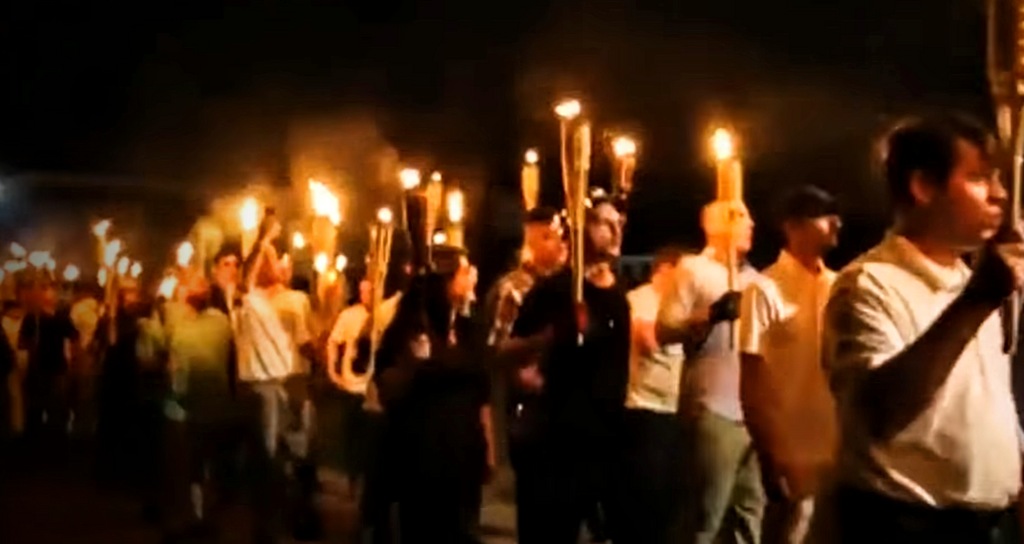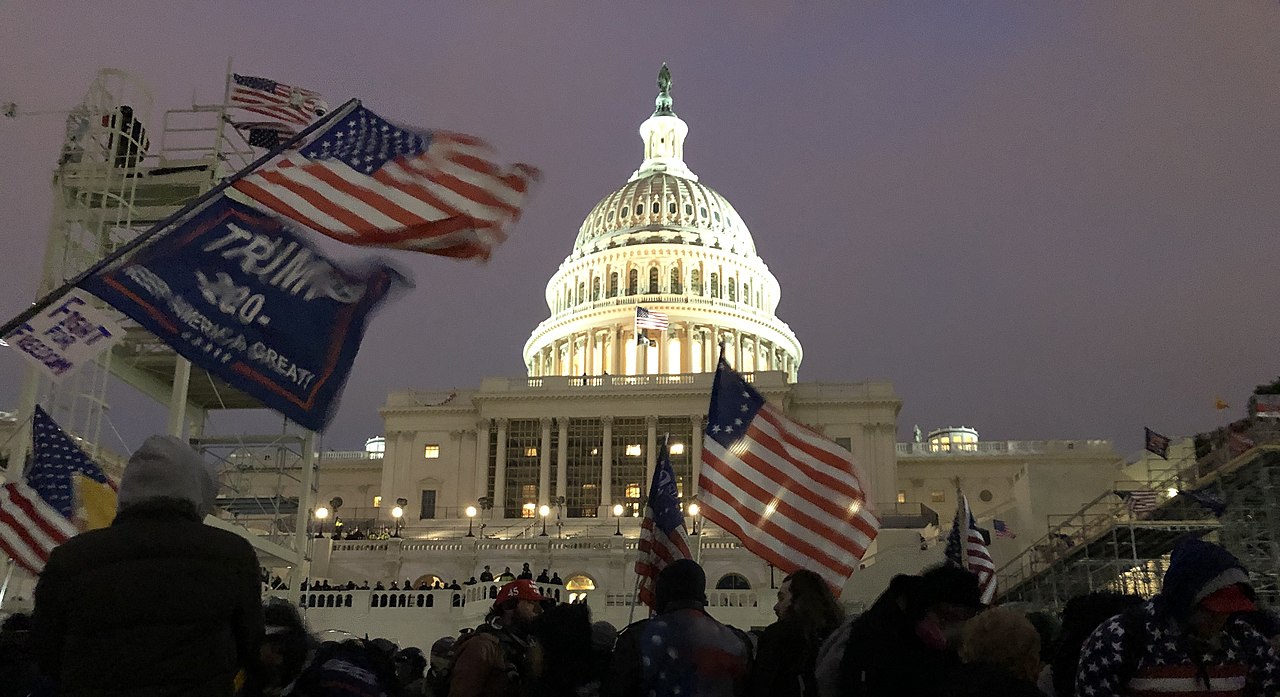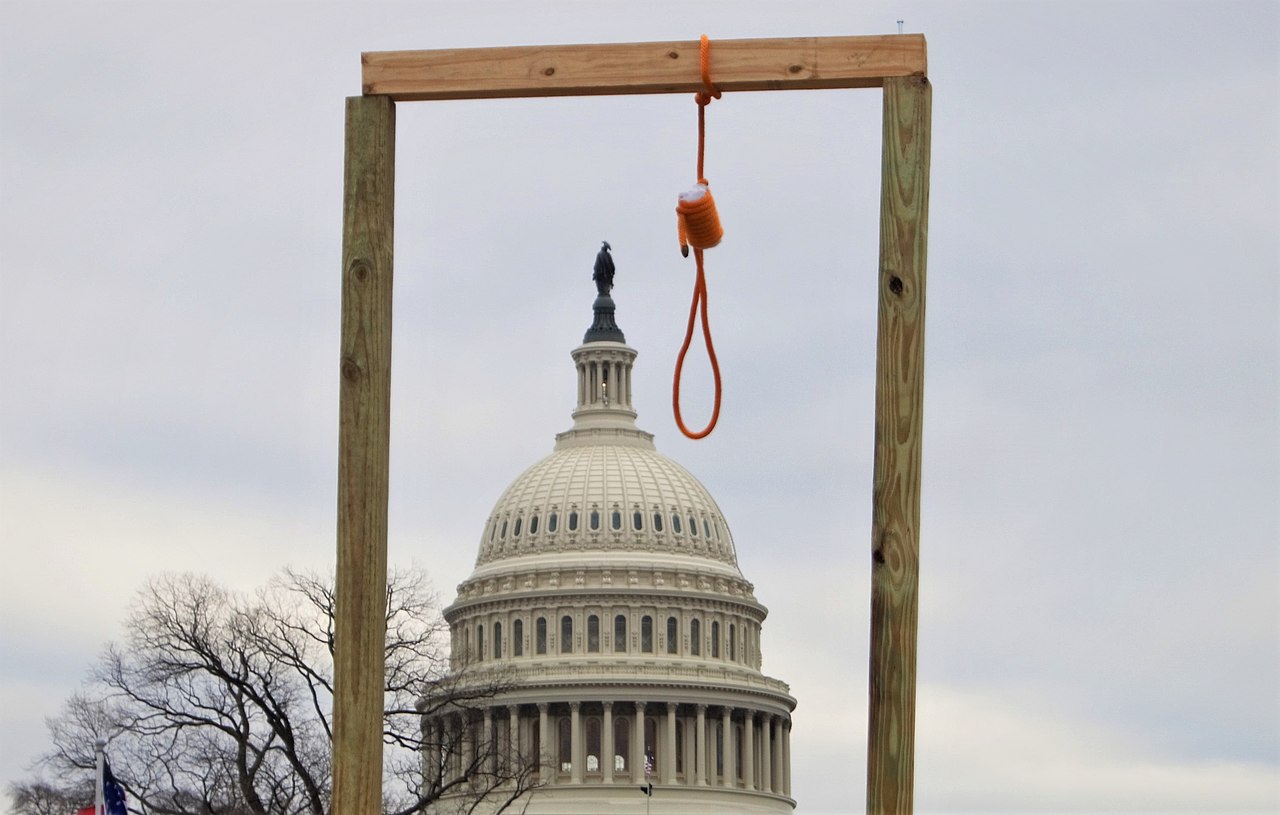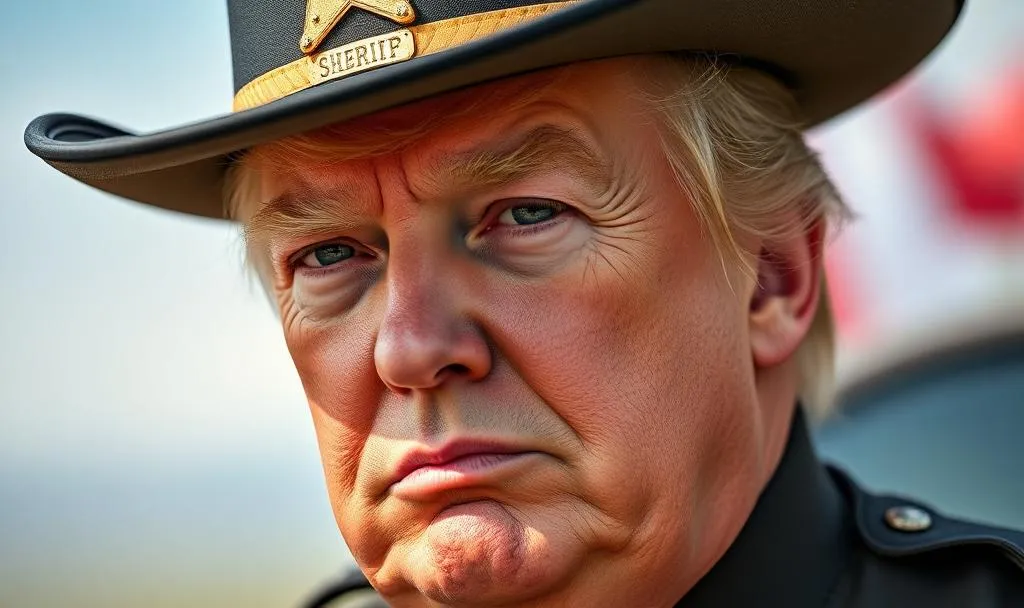 some of Trump’s “good people on both sides” (Charlottesville)
some of Trump’s “good people on both sides” (Charlottesville)
Our first Fascist president
Americans have finally come to the realization that Donald Trump really is a fascist. We got the first inklings when an ex-wife revealed that he kept Hitler’s speeches on his nightstand. But it’s never been a secret. Trump actually sounds like Hitler and acts like Mussolini. Even his own supporters don’t bother denying it since they themselves have been rubbing elbows with European fascists for years at CPAC conferences along with their spray-tanned Führer.
At least two of Trump’s new appointments, Pete Hegseth and Sebastian Gorka, seem to be fascists (Gorka even belongs to a pro-Nazi Hungarian order). Steve Bannon, Trump’s old campaign manager, has been trying to organize a fascist “Internationale” for years. Trump’s new Rasputin, Elon Musk, was raised in a fascist family that abandoned Canada for South Africa. It also came as no surprise to anyone when, barely a year into his first term, the German magazine Stern pictured Trump giving the Roman salute – better known as the Hitlergruß. Germans know a fascist when they see one.
 Germans know a fascist when they see one
Germans know a fascist when they see one
Fascist movement don’t just pop up out of nowhere. For sure, they have their autocrats, führers, caudillos, jefes, and strongmen; and of course they have a disaffected citizenry; but most importantly they represent they robber barons whose stream of barely-if-at-all-taxed riches will be affected by an annoying hoi polloi mobilizing to serve their own interests.
It is no coincidence that MAGA 1.0 really took off after the 2008 market crash and that MAGA 2.0 came back like a bad case of herpes right after the 2020 Black Lives Matter movement exploded.
As soon as anyone could say “Cheeto Hitler”, America’s rulers began banning books and cracking down on dissidents. Biden’s war on Gaza (yes, almost all the weapons came from the US) had a sobering effect on both citizens and rulers: it radicalized many of us and created a mass movement that questioned American empire, colonialism, and human rights violations — which proved to be one step too far for both the fascists and those claiming not to be.
For all of this, the unanswered, million dollar question remains: why did a large segment of the working class get 100% behind the fascists, while a similar-sized segment continues to fight them?
Sociologists, psychologists, and even political scientists have failed to adequately explain the phenomenon. Liberals are embarrassed to talk about class conflict or study what Marxists call the bourgeoisie. But we’ve had fascists at the door before, and the Marxists may just have the best analysis. So bear with me as I take you through how fascism has been studied — by liberals and Marxists alike — in the aftermath of National Socialism.
The Books
While Americans were busy trying to figure out whether Trump was or wasn’t a fascist, a huge number of books hit the market, each trying to define what fascism really is. But the emphasis in virtually all them is on the personal characteristics of fascist leaders or attempting to define the characteristics of fascist movements. None really deals with the class dynamics that push America’s ruling class to create and direct fascist movements.
Popular books making the rounds after Trump’s first election include: Timothy Snyder’s 2017 On Tyranny; Jason Stanley’s 2018 How Fascism Works: The Politics of Us and Them; Levitsky & Ziblatt’s 2018 How Democracies Die; Ruth Ben-Ghiat’s 2020 Strongmen: Mussolini to the Present; and Masha Gessen’s 2020 Surviving Autocracy (to name just a few).
Liberals also dusted off their copies of Robert Paxton’s 2004 The Anatomy of Fascism and Hannah Arendt’s 1951 classic, The Origins of Totalitarianism. And we kept making trips to the bookstore. One new arrival this year was Ann Applebaum’s Autocracy, Inc: The Dictators who Want to Run the World.
All of these books are useful up to a point. But for each the focus is on diagnosis and classification. None deal with how people like Trump or his MAGA movement — or the German AfD, the French Front National, Spanish Vox, Portuguese Chega!, Dutch PVV, or Hungary’s Fidesz Party — actually come to power or how reactionary interests conjure these movements out of peoples’ anger, almost like alchemy.
Fascism is as American as apple pie
Fascism has knocked on the door many times in America’s relatively short history. After the Civil War fascists rolled back Reconstruction in what W.E.B. Dubois considered a counter-revolution, establishing a terrorist organization, the Ku Klux Klan, which at one point had 4 million members. Eugenists and nativists created the “American Party,” better known as the Know Nothings. An offshoot of the KKK called the Black Legion actually attempted a coup. The Bund, a German-American group, famously held a massive rally in Madison Square Garden in 1939 — just as Hitler was constructing his 6th concentration camp — urging Americans to “take back their country” from the mongrel races, especially the Jews. George Lincoln Rockwell launched America’s first Nazi Party.
After the McCarthy period, which attempted to break a growing labor movement, more fascist groups emerged, such as the Traditional Workers Party, Stormfront, the Aryan Brotherhood, the Proud Boys, Patriot Front, Oathkeepers, and the Three Percenters. Many of them are now well entrenched in the police and military.
These were little more than a lunatic fringe until the Tea Party movement brought them into the political mainstream, welding them together with the Religious Right. The Tea Party “movement” — neither a legitimate movement nor even an organic upwelling of working-class sentiment — spun off hundreds of astroturf groups to do the ruling class’s dirty work. For instance, it was former Republican House Majority Leader Dick Armey who created Freedomworks and who wrote the Tea Party Manifesto.
When we actually look closely, America’s illiberal movements are usually orchestrated by moneyed interests. The John Birch Society, for example, was created by Massachusetts candy magnate James Welch. Today, like Welch, the Koch brothers, Miriam Adelson, the Hunts, Leonard Leo, and the Bezoses and Musks of this world don’t just dabble in politics; they expect something for all the money they lavish on autocracy and repressive politics.
Trump just appointed 14 billionaires to his executive team. One of them seems to think he’s a co-president. All will use their cabinet appointments to enlarge already obscene wealth and to shape society to their advantage. Add to this the Heritage Foundation, the Manhattan Institute, and hundreds more autocratic democracy-killers, all funded by right-wing billionaires. This, my friends, is what Capitalism has been doing to democracy since time immemorial.
 an early “dictator-buffoon” hybrid
an early “dictator-buffoon” hybrid
Fascists defining fascism
One of the best descriptions of fascism was written by a fascist, Benito Mussolini. His Doctrine of Fascism (1932) rejects liberal social democracy, socialism and syndicalism (Mussolini was previously involved in both), as well as the classical liberal notion of the individual. Instead, for Mussolini, everything must serve the state — in Italy’s case, a nation eager to recreate the glory of Rome. It was Mussolini who gave fascism its name, from fasces, a Roman image depicting rods bound together with an axe, symbolizing the power of the state over an individual.
For Mussolini the state was supreme. Individuals were only important in terms of their function within the state. Only the state conferred morality and identity: “Everything within the state, nothing outside the state, nothing against the state.” Like contemporary fascists, Mussolini rejected internationalism (which he correctly associated with socialism). Contempt for liberal democracy meant that single-party rule and authoritarianism were ideals, not defects. Contempt for the individual and worker’s organizations meant corporatism, by which the state would direct the economy (a complex maneuver since fascists certainly weren’t about to privatize corporations).
Fascist militarism is intrinsic because force and brutality, both by the military and the autocrat himself, are necessary to maintain an authoritarian state. Finally, fascism promises to create a “new man” unencumbered by conventional morality, weakness, hesitation, or qualms. As a replaceable human widget completely dedicated to the nation-state and dependent upon it for meaning, the new man abandons the materialism inherent in both capitalism and socialism.
Adolf Hitler’s conception of fascism, developed in two volumes of his autobiographical rant, Mein Kampf (my battle), covered much of the same ground as Mussolini’s but obsessed over the racial purity of the German nation-state. Hitler’s theories of Aryan supremacy and Jewish degeneracy led to the Nuremberg Laws (based on American Jim Crow), a host of antisemitic laws that purged Jews from the Civil Service and elsewhere, and embraced a weaponized form of Social Darwinism. Many forget that the first victims of Nazi extermination were average Germans with birth defects and mental health problems.
For Hitler Jews were a one-stop explanation for every ill in Weimar Germany; the removal of Jews would therefore address all these problems. Jews were Communists. Jews were Capitalists. Jews were internationalists. Jews were insular. Jews were diabolically clever. Jews were mental defectives. While expulsion and genocide had already begun, the “final solution” for Jews (complete annihilation) was finally formalized at the Wannsee conference in 1942. Hitler’s quest for Lebensraum (room to expand) was also a reaction to the limits placed on German nationalists by the victors of the first world war.
Psychological explanations of fascism
Although she was otherwise an astute political observer, Hannah Arendt, writing in The Origins of Totalitarianism, tied fascism’s appeal to lonely, atomized individuals. Her explanation resonates with modern readers for several reasons. It offers a mechanism by which the COVID epidemic could have contributed to the MAGA movement. Declining marriage and birth rates, alienation through social media and the breakdown of social institutions and consensus also fit tidily into Arendt’s essentially psychological theory.
Arendt wrote that, through propaganda and pseudo-science, alienated individuals can be easily manipulated into participating in the destruction of institutions they no longer believe hold any advantage for them, particularly when lies and propaganda are deployed. This includes the violation of laws and the rejection of social norms. Scapegoating and racial and ethnic intolerance are features of fascism and Arendt discussed in great depth the staggering number of refugees created in the wake of World War I — not so different from today’s global refugee crisis created by American wars in the Middle East as well as global warming.
Arendt is best known for her phrase “the banality of evil,” found in another of her books, Eichmann in Jerusalem. In it she maintains that Eichmann, in organizing a genocide, did so without really thinking, barely conscious he was committing crimes against humanity. Having abandoned his own humanity (as Mussolini and Hitler demanded of citizens of a fascist state) Eichmann also abandoned personal morality. This was a thesis that few believed and many, particularly other Jews, found offensive. In 2014 German philosopher Bettina Stangneth repudiated Arendt in Eichmann before Jerusalem. Stangneth’s thesis, developed from archival material unavailable to Arendt, was that Eichmann was every bit the monster everyone believed him to be, and was an ambitious, vain, calculating monster at that. But once again, all this was a debate about the psychology of a single fascist.
 storming the Capitol, January 6, 2017
storming the Capitol, January 6, 2017
The Frankfurt School
From 1923 the Institute for Social Research founded at Goethe University in Frankfurt (Germany) was known for social theorists Theodor Adorno, Max Horkheimer, Herbert Marcuse, Wilhelm Reich, Walter Benjamin, Jürgen Habermas, and others collectively known as “The Frankfurt School” despite widely-differing analyses.
Their work — much of it written in exile — drew from disparate intellectual currents of the early 19th Century: psychoanalysis; Marxism; and Critical Theory, a method of analysis that looks at power structures. As fascism manifested in real time, the Frankfurt School had much to say about authoritarianism, mass culture, propaganda, ideology, and power.
While haphazardly integrating Marxist class analysis into its work, the Frankfurt School focused mainly on psychology and sociology. Theodor Adorno examined the authoritarian personality. Walter Benjamin viewed fascism as an aestheticized politic glorifying war and violence and as theatre or religious spectacle in which myth and propaganda mimic religious ritual. Wilhelm Reich theorized that fascism appealed to the sexually repressed who more easily submit to authoritarian control. Reich believed that fascism could not be fought merely politically but had to address human and mass psychology that made it so attractive.
Contemporary diagnosticians
Contemporary analyses echo many of the theories first developed by the Frankfurt School.
Jason Stanley describes the tools and strategies that autocrats use to cement their power: “us versus them”; the mythic past; “alternate facts” and propaganda; attacks on intellectuals and universities; appealing to “law and order” while demonizing minority groups as criminals; promoting a “traditional” hierarchical society (appealing to the religious right and to racists); attacking democratic norm; pushing the Overton window of unacceptable or criminal acts; and advocating or initiating political violence.
Timothy Snyder finds fascism to be essentially opportunistic, feeding on fear and unrest. He points out that fascists are given to apocalyptic rhetoric — “on the brink”; “American carnage”; “complete destruction of society by our enemies” — as well as associating the Leader with God.
Robert O. Paxton offers an excellent summary of fascism’s features (again, not its etiology) in one paragraph:
“a form of political behavior marked by obsessive preoccupation with community decline, humiliation, or victimhood and by compensatory cults of unity, energy, and purity, in which a mass-based party of committed nationalist militants, working in uneasy but effective collaboration with traditional elites, abandons democratic liberties and pursues with redemptive violence and without ethical or legal restraints goals of internal cleansing and external expansion.”
Paxton enumerates five stages of fascism’s development: (1) the creation of movements, when a movement steps in to respond to a social crisis; (2) rooting or embedding of fascism within the political system (going mainstream); (3) seizing power; (4) wielding power; (5) radicalization or decline, where either the regime amasses even greater power or is finally repudiated by the people (or hung from a hook like Mussolini, or committing suicide in a bunker like Hitler).
Paxton observes that fascism seeks out elites who will control the economy or the military. Trump’s appointments and Project 2025 would seem to confirm this idea.
But is it fascism that seeks out elites, or elites that create fascism?
Since liberal analysis neglects class analysis and discounts internationalism, liberals often excoriate obvious enemies while letting their “friends” off the hook. Read Robert O. Paxton’s definition of fascism again and tell me how he has not just described to a “T” the Israeli state and its ultra-nationalist ideology, Zionism.
 fascism ultimately depends on violence
fascism ultimately depends on violence
The Marxists
While the liberal analysis of fascism offers insights into its characteristics and its repertoire of dirty tricks, Marxists can actually explain it.
The smoke had barely cleared following the Russian Revolution when fascism arrived to roll back social and economic gains of the revolution. Fascists openly declared war on socialism and socialists, leaving no doubt that their reaction was not a corrective to some vague social disquietude — as almost every modern commentator paints it — but a violent reaction to the growing demands and power of the working class.
While there are certain methods and strategies that fascist movements share, not all are alike. Each is typically shaped to fit the particulars of the nationalism being promoted. While liberals may argue about characteristics of fascism that differ among movements, Marxists have done a far better job of describing the mechanics of how fascists take power and mobilize part of the working class.
Here are a few who made contributions to understanding fascism using a class analysis:
Gramsci
Antonio Gramsci was an Italian Communist, eventually jailed by the fascists, who wrote his famous prison notebooks behind bars. One of Gramsci’s observations was that fascism doesn’t always have to overpower or destroy its enemies; sometimes it simply operates by manufacturing mass consent. Gramsci examined how propaganda is used to accomplish this. He noted that one of fascism’s most important objectives — one that the wealthiest strata of society benefit from enormously — is the destruction of working-class organizations like unions and worker’s advocacy groups, replacing them with corporatist structures under state control.
In 1921 Gramsci wrote The Two Fascisms, describing how the fasci di combattiemento was created after the first world war, how disaffected veterans and farmers had been drawn into one form of fascism — weak and under-represented in Parliament — while urban shopkeepers and small businessmen were drawn into a second form with significantly more power in the legislature, and led by Benito Mussolini. Gramsci wrote that the two fascisms related somewhat differently to liberal and social-democratic parties. The urban fascists were only too happy to reach agreement with the social democrats (who were only too happy to give in to the fascists’ demands) while the rural fascists remained intransigent in the face of all the back-slapping and deal-making. Gramsci also gives us a clear sense that, by understanding precisely how fascism works and what its weaknesses are, we can better fight it.
 ready to play ball with fascism
ready to play ball with fascism
Zetkin
Clara Zetkin was an another early theoretician of fascism. In 1923 she wrote The Struggle Against Fascism setting out a Marxist theory of fascism. Her words sound modern even a century later — though to properly-conditioned Americans certain words (bourgeois, proletariat) will evoke a conditioned response.
“[W]e view fascism as an expression of the decay and disintegration of the capitalist economy and as a symptom of the bourgeois state’s dissolution. We can combat fascism only if we grasp that it rouses and sweeps along broad social masses who have lost the earlier security of their existence and with it, often, their belief in social order. Fascism is rooted, indeed, in the dissolution of the capitalist economy and the bourgeois state. There were already symptoms of the proletarianization of bourgeois layers in prewar capitalism. The war shattered the capitalist economy down to its foundations. This is evident not only in the appalling impoverishment of the proletariat, but also in the proletarianization of very broad petty-bourgeois and middle-bourgeois masses, the calamitous conditions among small peasants, and the bleak distress of the “intelligentsia.” […] At present all these layers are experiencing the collapse of the hopes they had placed in the war. Their conditions have become significantly worse. What weighs on them above all is the lack of security for their basic existence, which they still had before the war.”
By crushing government institutions that sustain liberal democracy, as well as by imposing austerity programs, fascists accelerate the immiseration and fragility of the working class. It is no coincidence that Donald Trump has tasked Elon Musk with precisely the job of destroying the civil service. As Zetkin explains:
“As a result there are countless thousands seeking new possibilities for survival, food security, and social standing. Their number is swelled by lower and mid-level government employees, the public servants. They are joined, even in the victor states, by former officers, noncoms, and the like, who now have neither employment nor profession. Social forces of this type offer fascism a contingent of distinguished figures who lend it in these countries a pronounced monarchist hue. But we cannot fully grasp the nature of fascism by viewing its evolution solely as a result of such economic pressures alone, which have been considerably enhanced by the financial crisis of the governments and their vanishing authority.”
Zetkin provides a detailed analysis of Italian and German fascism, its strengths and vulnerabilities, and lays out a strategy to fight it. One of those strategies is the United Front:
“But proletarian struggle and self-defense against fascism requires a proletarian united front. Fascism does not ask if the worker in the factory has a soul painted in the white and blue colors of Bavaria; or is inspired by the black, red, and gold colors of the bourgeois republic; or by the red banner with a hammer and sickle. It does not ask whether the worker wants to restore the Wittelsbach dynasty [of Bavaria], is an enthusiastic fan of Ebert, or would prefer to see our friend Brandler as president of the German Soviet Republic. All that matters to fascism is that they encounter a class-conscious proletarian, and then they club him to the ground. That is why workers must come together for struggle without distinctions of party or trade-union affiliation.”
Trotsky
Although Leon Trotsky served as foreign minister, defense minister, and economic minister under Lenin’s Bolshevik government and was considered to be the “second in command,” he was later regarded as an enemy of the state after Lenin died and Stalin came to power. Stalin forced Trotsky into exile in 1929 and between 1936-1938 Stalin initiated a campaign of purging political enemies called the Great Terror, which claimed 1.2 million lives. In 1940 Stalin finally assassinated Trotsky, who had sought asylum in Mexico. During Trotsky’s 12-year exile in various countries, the former foreign minister studied political developments and wrote voluminously. This was precisely the timespan during which European fascism emerged. And Trotsky had a lot to say about it.
In 1944 Trotsky wrote Fascism: What it is and How to Fight it. Fascism always arises during periods of deep crisis in capitalist countries because the ruling class uses discontent to create fascist movements, whose objective in turn is to crush revolutionary movements and protect capitalist interests.
Trotsky argues that what Marxists call the petit bourgeoisie (middle classes, small business owners, and skilled professionals) is affected like anyone else by economic collapse. However, they do not necessarily see their interests overlapping with what Marxists call the proletariat (instead let’s use marginal, gig, and blue collar workers). It is usually the petit bourgeoisie that first succumbs to the siren call of fascism.
From Capitalism’s perspective, the capitalist class (the 1%, let’s say) rolls out fascism as a last resort after all other methods of maintaining control have failed. Suddenly we get censorship, political persecution, enemy lists, as well as the suppression of labor unions, demonization of socialists and others who challenge the corporate-friendly state, its foreign policy, or its military/police. Sound familiar?
In order to accomplish its goals, fascism relies on all the tricks and techniques described previously. But then comes the violence. Mass fascist movements begin to target and scapegoat minorities, encourage violence and paramilitary thuggery. Trotsky predicted “Stand back and stand by” 80 years before Trump ever uttered the phrase. Eventually, shutting down unions and criminalizing leftist political groups is undertaken.
While liberals see fascism’s emergence as a consequence of the weakness or absence of revolutionary struggle (or even mass movements), Trotsky viewed fascism as the dialectical consequence of the rise of revolutionary struggle. Fascism, for Trotsky, is what you get when increasing demands for social change scare the hell out of the ruling class. Trotsky was very clear that working people can expect no help from social-democratic parties (i.e. Democrats, Greens, Libertarians, lets say) who often end up brokering deals with the fascists all too quickly once they take their seats in government.
The wildcard in all of this is that segments of a disaffected working class and a frightened petit bourgeoisie can go either way — right or left. Social democratic party half measures to relieve social and economic pressures rarely do anything more than shift the social democrats to the right in their efforts to compete in elections or convince voters they’re not radicals. This is why the Democrats lost the last election. By the time the social democrats have ceded most of their power to the fascists, there may no longer be elections.













 some of Trump’s “good people on both sides” (Charlottesville)
some of Trump’s “good people on both sides” (Charlottesville) Germans know a fascist when they see one
Germans know a fascist when they see one an early “dictator-buffoon” hybrid
an early “dictator-buffoon” hybrid storming the Capitol, January 6, 2017
storming the Capitol, January 6, 2017 fascism ultimately depends on violence
fascism ultimately depends on violence ready to play ball with fascism
ready to play ball with fascism